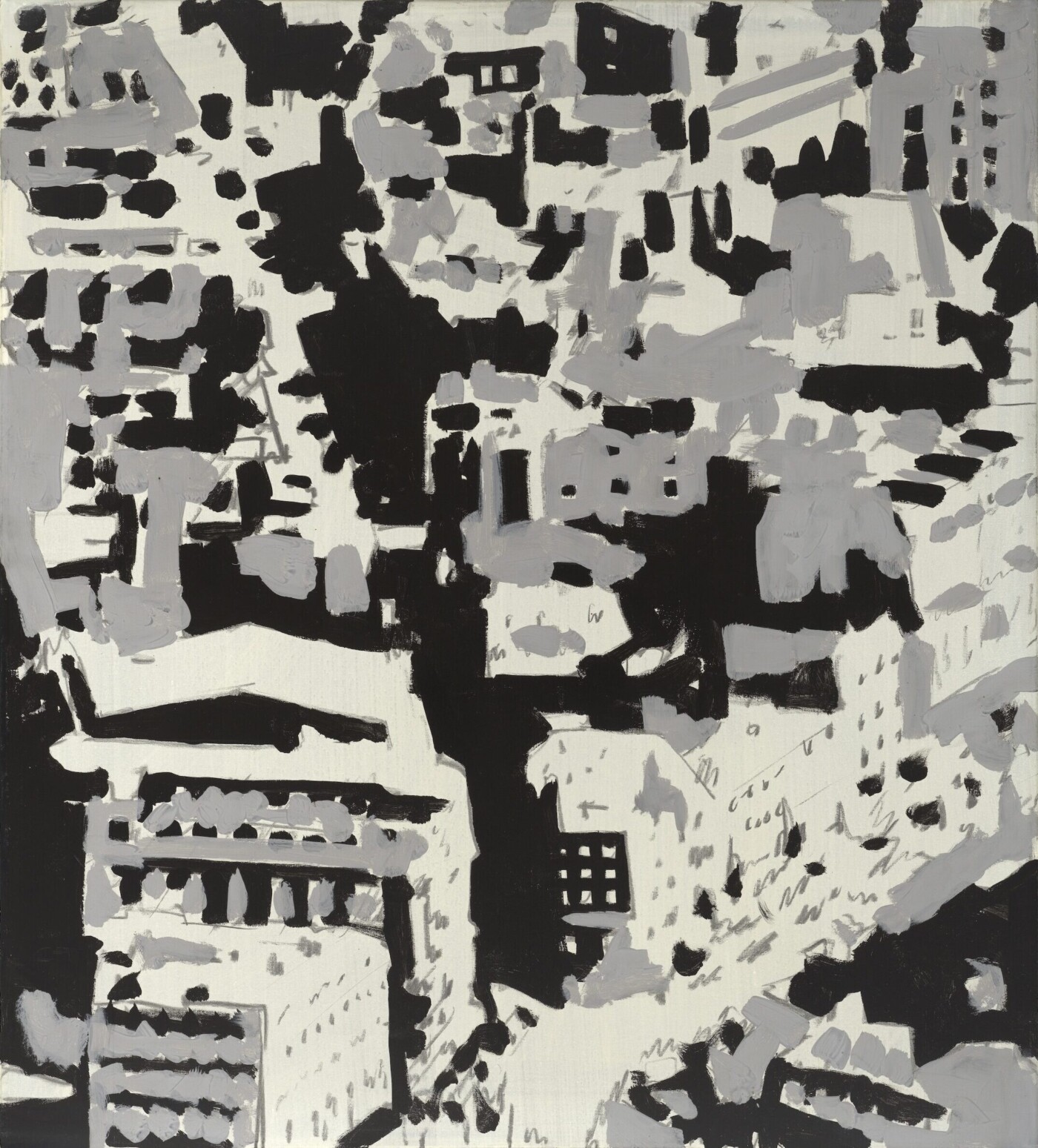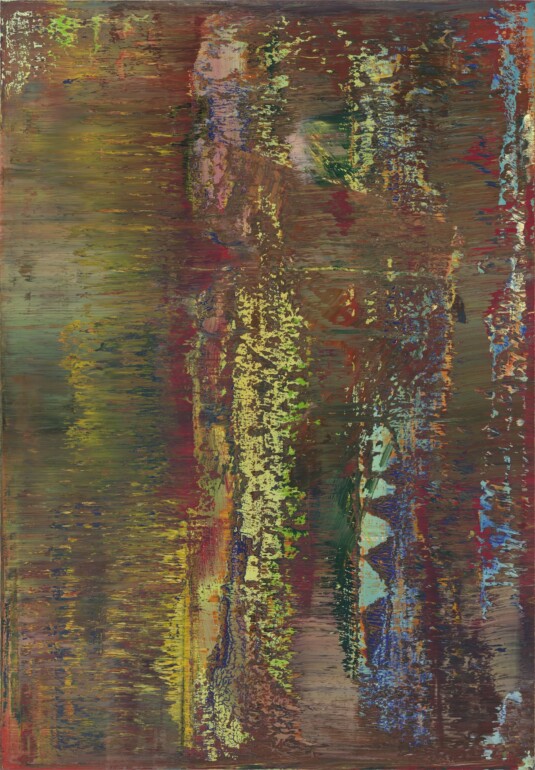Stadtbild P2 (174-2), 1968
Gerhard Richter is among the most important artists living and working today. Since the 1950s he has revisited and redefined common notions of painting by challenging the protocols and conventions such as the relationship between painting and photography. This is also apparent in his series Stadtbilder, which he produced in the late 1960s. Based on WWII-era aerial footage and architectural models, these works indirectly thematise the inherent connections between image-making technologies and war.
In transferring the source images into painting, the artist leaves the perspective unchanged and retains the reduction to grayscale. Richter frequently omits areas of the source photograph that show prominent buildings and so could assist in the identification of the depicted area. The townscapes often exhibit gestural brushwork – loose, wide brushstrokes with an impasto application of paint – while some parts of the canvas are left unpainted. These works likewise challenge common notions of abstraction and representation.



